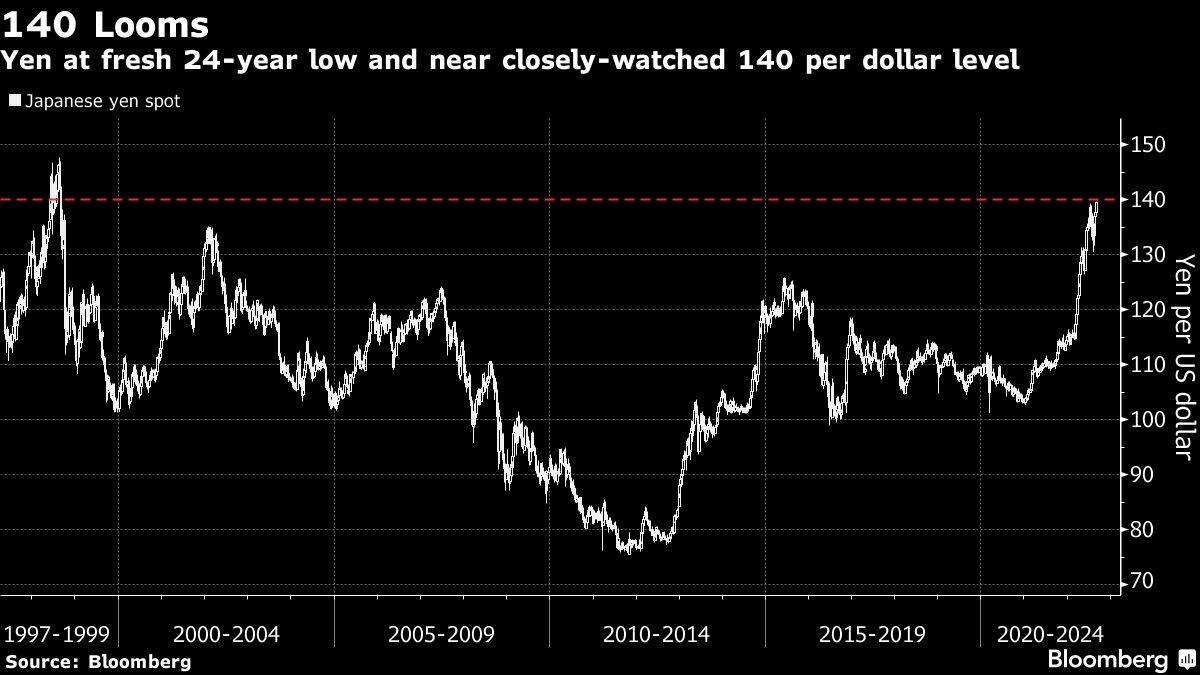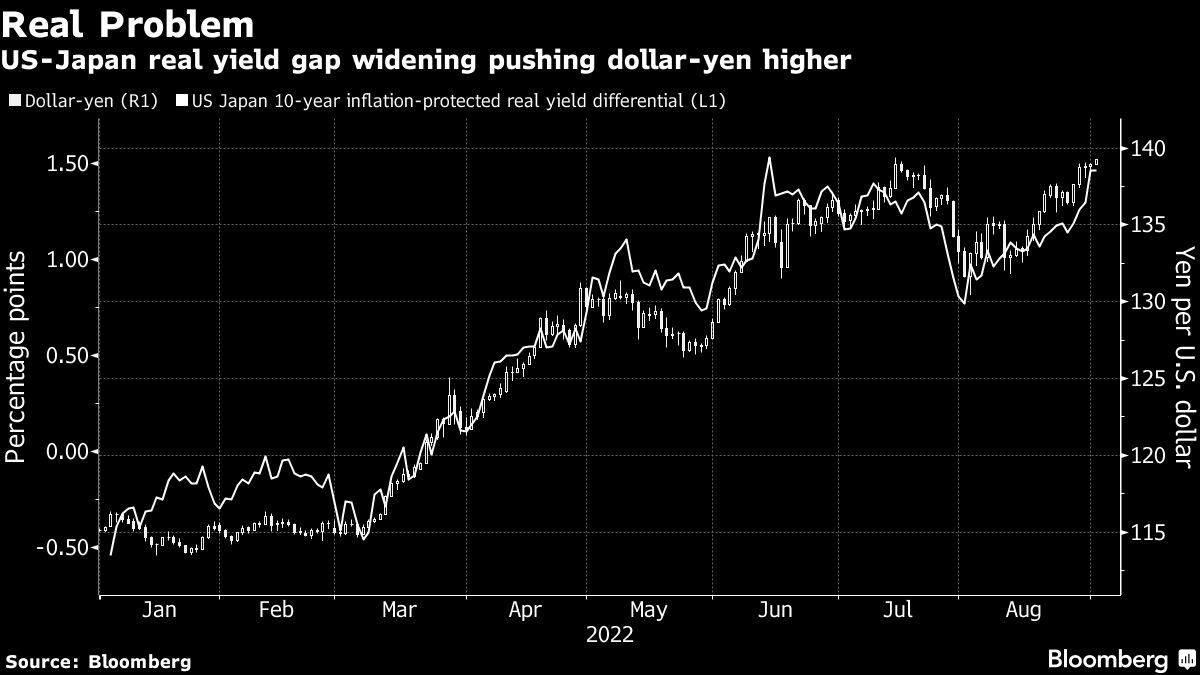Japanese 10,000 yen banknotes in a currency counting machine arranged at a branch of Resona Bank Ltd. in Tokyo, Japan, on Tuesday, Aug. 9, 2022. Dollar-yen, which soared 38% from a March 2020 trough to mid-July this year, is in retreat. Photographer: Kiyoshi Ota/Bloomberg
The yen dropped to its lowest since 1998 as an overnight surge in Treasury yields heaped more pressure on the Japanese currency.
The yen fell 0.4% to 139.59 per dollar in Thursday trading in Tokyo -- a fresh 24-year low. Next up for FX watchers is the key psychological level of 140, which some analysts have said may potentially trigger intervention from officials.
The impact of the hawkish Federal Reserve Jackson Hole symposium has continued to ripple through markets, pushing benchmark Treasury yields up through 3.2%. Data showing that euro-zone inflation jumped to a record in August, above expectations, also weighed on global bonds Wednesday.
“European CPI for August confirmed that global inflation is far from being contained and renewed upward pressure on US yields to give tailwinds to the dollar-yen,” said Takuya Kanda, general manager at Gaitame.com Research Institute in Tokyo. “With Bank of Japan Governor Haruhiko Kuroda’s stance, players have only to sell the yen.”

Fed Chair Jerome Powell’s speech at Jackson Hole last week made clear concerns about the economic slowdown are not a priority, wiping out lingering optimism of a softer stance on interest rates. BOJ Governor Kuroda, in contrast, repeated the need for continued easing, highlighting once again the stark policy differences between Japan and the US that heaped pressure on the yen earlier this year.
The gap in inflation-adjusted yields between the U.S. and Japan has widened, close to its highest this year. That so-called real-yield gap has been a big driver in yen weakness, as investors sought out the more attractive returns in the US compared to Japan that the spread signifies.
The Japanese currency’s slide back toward the closely-watched 140 level is reigniting chatter on the likelihood officials will intervene to support it.
The last time Japan propped up the yen was during the Asian financial crisis of 1998 when it reached around 146 to the dollar. It had previously intervened at levels around 130.

Meanwhile, since Powell reiterated the size of Fed rate hikes is data-dependent, traders will be closely watching Thursday’s US ISM manufacturing data and Friday’s labor report as the next possible catalyst for yen weakness.
“I don’t think yen will reach 140 before these data but strong ISM and jobs will surely drive the currency to the psychological level,” Kanda said. “As players will likely feel a sense of achievement after reaching 140, the pace of yen’s decline is expected to slow although trend remains downward.”
This week’s MLIV Pulse survey focuses on China. It’s anonymous and it only takes a minute to fill out. Please click here if you would like to share your views.